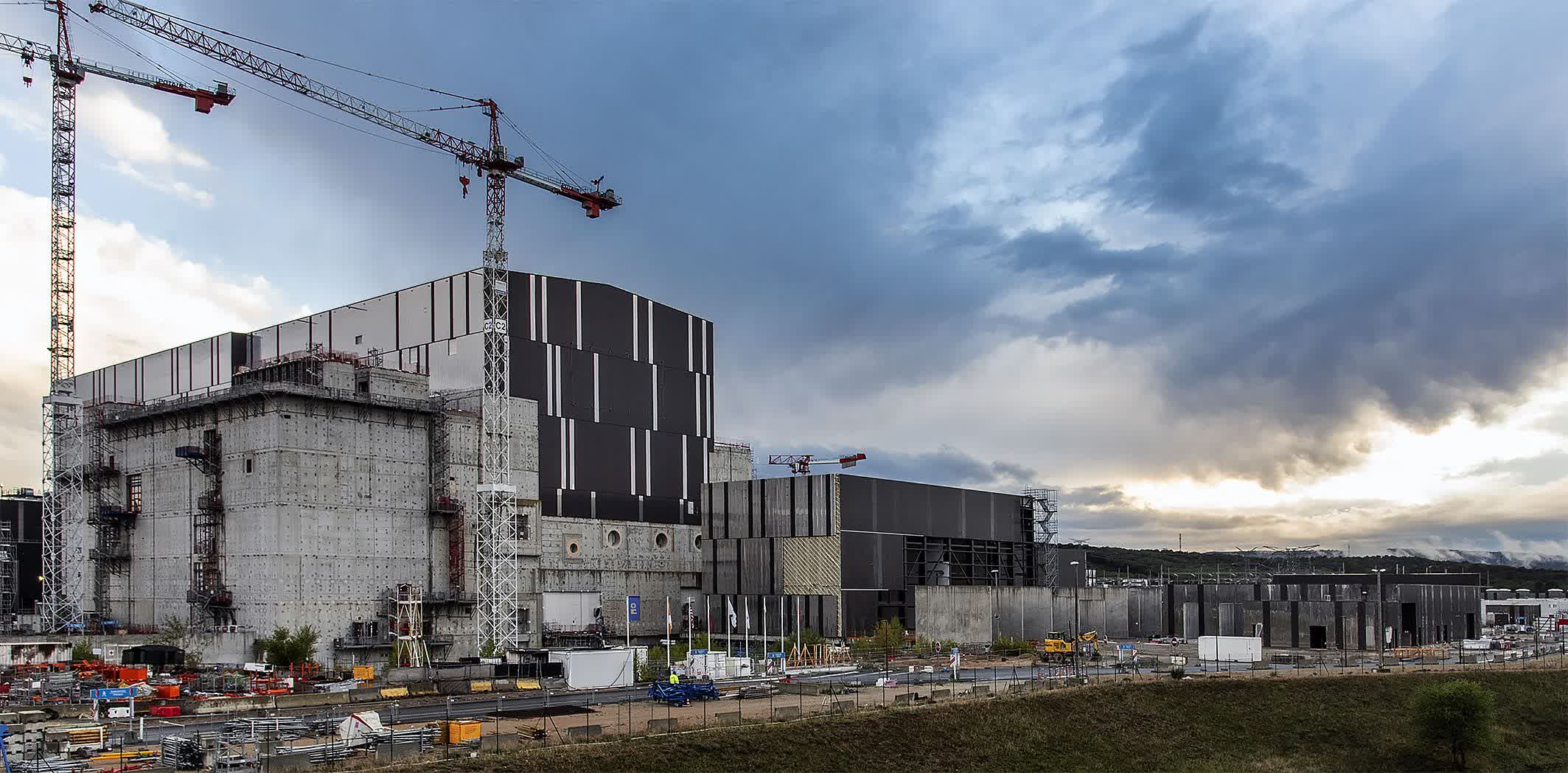In brief: The world's most ambitious nuclear fusion project has hit another major delay, with scientists now saying the massive International Thermonuclear Experimental Reactor won't start genuine operations until 2039 at the earliest. That's four more years tacked onto an effort that has already suffered repeated postponements and budget overruns.
ITER Director-General Pietro Barabaschi recently provided details on the new "baseline" plan being evaluated by the project's governing body. Originally planned to begin firing up in 2020 with a total price tag of around $5 billion, the project has now ballooned to over $22 billion in costs, with an additional $5 billion proposed. The pandemic and repairs required on key machine components were cited as the main reasons behind the delay.
The setbacks for ITER, a joint effort between 35 nations, mean fusion power is extremely unlikely to contribute solutions for climate change and energy needs anytime soon. For over 70 years, scientists have tried to replicate the fusion reactions that power stars by fusing hydrogen atoms into helium, hoping to create a clean, virtually limitless energy source.
The challenges have proven immense. Tokamak reactors like ITER must superheat gaseous hydrogen fuel to over 150 million degrees Celsius to convert it into plasma while controlling it with intense magnetic fields. No design has yet managed to get more energy out than is required to spark the reactions.
Under the new baseline presented by Barabaschi, ITER will achieve full magnetic energy in 2036 with a more complete machine configuration, including the divertor to handle exhaust, blanket shield blocks, and other key components and systems already installed. This will allow for a more robust start to operations with hydrogen and deuterium-deuterium plasmas.

Moreover, instead of a symbolic "machine test" as originally planned, Barabaschi said the updated approach will allow for real research from the start using plasma, "leading to the demonstration of integrated commissioning at full magnetic energy and current." ITER will work towards achieving its goal of producing a burning plasma that achieves a 500-megawatt output from just 50 megawatts of input heating power.
Another change will involve using tungsten instead of beryllium for the reactor's plasma-facing inner wall lining. "You will not find a fusion reactor project that plans to use beryllium," Barabaschi stated. "This modification makes our experiment more relevant to next-phase devices."
ITER's switch to using tungsten instead of beryllium aligns with recent fusion research milestones. In May, tests at Princeton demonstrated tungsten's viability for containing extremely hot, dense plasmas needed for commercial fusion power. Their demo sustained temperatures of approximately 50 million degrees Celsius for a record six minutes with 1.15 gigajoules of power injected – 15% more energy and twice the density than before.
Still, even as we anticipate the limitless potential of nuclear fusion, Barabaschi suggested that we do not look at it as a solution to current climate and energy woes.
